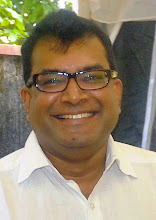It is clear from reading the article in
the link below on this week’s revelation that the death toll from the Hurricane
Maria that hit Puerto Rico A YEAR AGO was revised only this week from 64 to
3,000, that even in the USA there is utter confusion on how to handle a
disaster. Don’t forget the USA has natural disasters frequently almost every 6
months and they still have to get their act together in putting procedures in
place to make sure those MOST VULNERABLE are immediately assisted.
When reading the article in details
there are so many areas that must be considered and is a case study, I will
recommend to Sri Lanka’s Disaster Management Ministry to read carefully and
understand how systems must be in place to minimize the effect of a disaster.
We in Sri Lanka do not have to re-invent
the wheel and we can easily use the examples of others to better manage
disasters, as it is a science worthy of a degree at University, on disaster
management and mitigation, a course a Private University cold set up in Sri
Lanka as a world first to attract students from all over the world to follow!
Please be mindful that climate change is
upon us and soon the Maldive Islands will disappear with their citizens needing
to be re-settled. So it is a matter on our doorstep anyway.
The article even talks about doctors not
being trained properly to assess the real reason a death occurred and instead
put the reason of the final medical rationale, but what predicated that heart
attack or other trauma that speeded death. This is just one aspect of
preparedness and directing resources to where it is needed.
Today, 17 districts of 25 are suffering
drought, and the most urgent aspect of that is potable water for people and
something as simple as that in a small country, has not been properly managed,
when you have computer systems, and communications to manage the movement of
trucks of water from places there is plenty of it, to places that are in need,
which can be done within hours, with simple technology, just like how
ambulances can be dispatched to an accident scene in the shortest possible
time, when you know the location of the accident and the location of the
closest available ambulance. It is the will of the state that is lacking to do
the simple things that will save lives and prolong others.

2 comments:
Sri Lankans love to create disasters. They do not want to learn lessons from others as they either think they know it all, or they do not see the USA as a good example to learn from. It is this arrogance that pervades the Ministry of Disaster Management today, who have hardly done any work in really assessing the true magnitude of the drought, as it is affecting some places more than others, and they still do not have a procedure to make sure those most at risk are immediately assisted.
In a small country the size of Sri Lanka if the Public Services are so incompetent, it is time to abolish the public service altogether and privatize even disaster management, as they will be able to do a faster job and even identify areas of need and merely bill the state for the services rendered and that will much cheaper than keeping jokers in jobs calling themselves disaster management staff and experts, who do nothing sitting in their offices, while people are suffering
Its true, the IT is simply restricted to a high tech website that no doubt would have cost a lot of money, but why should the ministry be in Colombo 7 anyway?
Here is the web link to the Ministry http://www.disastermin.gov.lk/web/
Post a Comment